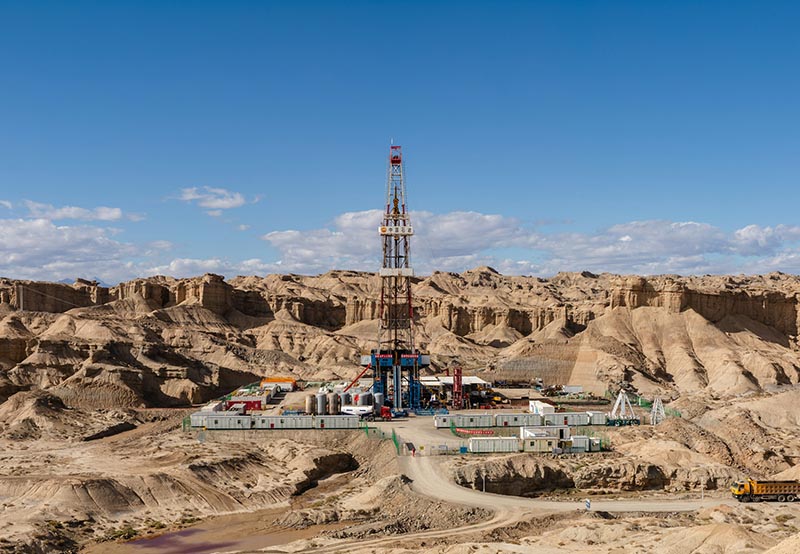
Is the green agenda losing its momentum?
ExxonMobil, Chevron, TotalEnergies, Eni, Shell and bp are titans of the energy landscape. Among them, European oil majors Shell and bp have emerged as leaders in the journey to transform their businesses towards environmental sustainability. They have strategically invested in sustainable ventures and are actively reducing reliance on fossil fuel production.
In 2021, Shell launched its “Powering Progress” Energy Transition Strategy, which encompasses all aspects of its operations, including integrated gas, upstream and downstream, renewables and energy solutions. At the time, the strategy received resounding support from shareholders, with an 89% affirmative vote.
Shell published its first update of the Energy Transition Strategy in March 2024, which, in essence, aims to deliver more value to shareholders with less emissions. This entails a “balanced and orderly” transition from fossil fuels to low-carbon energy solutions while ensuring a secure and affordable energy supply. Despite the increasing momentum towards renewables, fossil fuels still meet approximately 80% of the world’s primary energy needs.
Shell’s latest market update outlines several changes in company targets and strategy, which has provoked climate activists and certain environmentally conscious investors who had urged the company to expedite its decarbonisation efforts.
The 2021 transition strategy established carbon intensity reduction targets of 6-8% by 2023, 9-12% by 2024, 20% by 2030, 45% by 2035 and 100% by 2050, relative to a 2016 baseline. Carbon intensity refers to the amount of carbon dioxide emissions produced per unit of energy or economic output.
Shell energy transition strategy update
In the March 2024 edition, Shell revised its 2030 target to a 15-20% reduction in net carbon intensity, compared to the previous target of 20%. This adjustment reflects the company’s anticipation of sustained strong demand for natural gas and broader uncertainties in the pace of global energy transitions.
The UK-based multinational also chose to retire its 2035 net carbon intensity target, which had aimed for a 45% reduction. The decision was made due to uncertainties in the pace of change across many countries and the broader energy transition landscape. Shell emphasised that its 2050 net zero target remains at the heart of its strategy, asserting a belief that this target aligns with the goals of the Paris Agreement to limit global warming to 1.5°C above pre-industrial levels.
Carbon intensity targets are somewhat controversial as a means of measuring climate progress as they focus on emissions per unit of output rather than absolute emissions, which monitor a company’s overall carbon footprint. Technically, a company can reduce its carbon intensity while expanding its overall carbon footprint, by using offsets or additional investments in renewable energy. The softening of carbon intensity targets has been viewed by some climate campaigners as prioritising profits over the planet.
Shell has maintained its 2021 absolute emission reduction target of halving Scope 1 and 2 emissions by 2030, relative to 2016 levels. The company is currently ahead of schedule, having achieved 60% of the target before the midpoint of the decade.
Oil majors have historically been hesitant to take responsibility for Scope 3 end-user emissions. However, Shell’s 2024 strategy marks a shift, with the inclusion of a new target for Scope 3 emissions: a reduction of 15-20% by 2030, compared to a 2021 baseline. Scope 3 emissions account for approximately 95% of Shell’s greenhouse gas (GHG) emissions.
While Shell has indicated its plans are on track to achieve the goals of the Paris Agreement, the United Nations website suggests emissions need to be reduced by 45% by 2030 to keep global warming to no more than 1.5°C.
Shell recently announced significant changes to its downstream footprint with the sale of the Singapore Energy and Chemicals Park and its downstream unit in South Africa, signalling the end of refining operations in the two large regions. The UK-based major suggests the portfolio changes are based on performance and returns; however, the move will greatly assist the company’s Scope 3 emissions reduction targets.
Another strategic turn is the company’s approach to generating and selling power. Shell plans to redirect its efforts to commercial over retail and is withdrawing from the direct supply of power to homes in Europe–which it says is not a competitive position. The decision to prioritise selected markets and segments reflects a shift towards “value over volume” in power, says Shell.
Shell is the world’s largest liquefied natural gas (LNG) trader. Wael Sawan, chief executive officer at Shell, believes LNG will play a pivotal role in the transition, serving as a substitute for higher-polluting fossil fuel sources. The strategy outlines expectations of robust gas demand growth in the foreseeable future. LNG plants will be powered with renewable electricity and Shell plans to implement carbon capture and storage in the future to reduce the carbon intensity of these plants.

Investment in oil and gas
In 2021, the International Energy Agency stated that to limit temperature increases, the world should refrain from drilling any new oil and gas fields. One of the more contentious aspects of Shell’s 2024 strategy lies in its plans for continued investment in oil and gas fields. The company intends to sustain the production of crude oil and natural gas liquids at a stable 1.4 million barrels per day until 2030. Significant investment is deemed necessary as existing fields will naturally decline faster than reductions in global energy demand.
Shell plans to explore existing positions and basins, with supply increasingly coming from its deep-water business—which the energy major suggests offers higher margins and lower carbon impacts. Shell “does not anticipate” any new frontier exploration entries after 2025.
Abatement technologies, such as carbon capture and storage, are critical in achieving its net zero ambitions, says Shell. Hydrogen and renewable energy will also play a central role in efforts to reduce carbon intensity as LNG continues to expand.
The strategy also highlighted accelerated efforts to eradicate routine gas flaring from upstream operated assets. In 2023, Shell achieved a methane emissions intensity of 0.05%, well below its target of 0.2%. Previously, the target for elimination was set for 2030, but it has now been brought forward to 2025.
However, the document acknowledges this goal is subject to the completion of the sale of its Nigerian onshore subsidiary (SPDC) to a consortium of five companies, raising questions about whether this move represents a mere transfer of responsibility rather than the genuine elimination of environmental impacts.
Sawan emphasised that the updated strategy more closely aligns with shareholder value, noting that oil and gas production yields the highest returns. Currently, 70% of Shell’s cash flow comes from its integrated gas and upstream businesses. In contrast, the downstream, renewables, and energy solutions businesses account for 30% of cash flow, yet contribute three-quarters of recorded emissions. On May 29, it was reported that Shell plans to cut jobs in its offshore wind division, part of its effort to focus on its most profitable ventures.
Despite concerns from some quarters about a continued focus on oil and gas, Shell stressed that its ability to raise and invest capital depends on delivering strong returns to shareholders, thus shaping the role that Shell can play on the journey to net zero. “We believe this focus makes it more, not less, likely that we will achieve our climate targets and ambitions,” says Sawan. Shell also highlighted its investment of USD10-15 billion in low-carbon energy solutions between 2023 and 2025.
At Shell’s Annual General Meeting, held in London on May 21, 2024, the updated strategy received strong backing from shareholders, with 78% voting in favour. The meeting also addressed a climate resolution filed by Dutch activist group Follow This, which aimed to align the company’s policies with the Paris Climate Agreement. This climate resolution, however, was rejected, receiving 18.6% of votes, a lower percentage than the 2023 climate resolution (20.2%).
While Shell has faced accusations of backtracking on its green agenda, several governments have also scaled back their climate commitments amidst soaring energy costs and supply concerns. Is the green transition losing its momentum?

bp’s adjusted commitments
bp is the only major oil company that has vowed to cut its oil and gas output, with a 2020 pledge from then-CEO Bernard Looney to reduce production by 40% by 2030. bp has also undertaken generous spending on projects outside its core oil and gas business.
However, bp has also done an about-turn. In February 2023, amid reports of record profits, bp adjusted its ambition to a 25% cut in production by 2030. Simultaneously, the British multinational scaled back its commitment to reducing upstream emissions.
Despite easing its transition plans, bp continues to face pressure from some shareholders to prioritise profitability. Earlier this year, a letter from London-based Bluebell Capital Partners, an influential hedge fund, called on bp to change its strategy, urging the company to steer clear of businesses with low investment returns, such as solar and wind energy. The firm appealed for an increase in oil and gas production in the immediate term and advocated for emissions reductions “only in line with society.”
In early May 2024, several analysts predicted bp would undertake additional changes to its guidance on oil production as it becomes more “returns focused.” Looney had previously advised investors that the expected profit margin for renewable projects was roughly 6% to 8%, compared to up to 20% from oil and gas investments.








